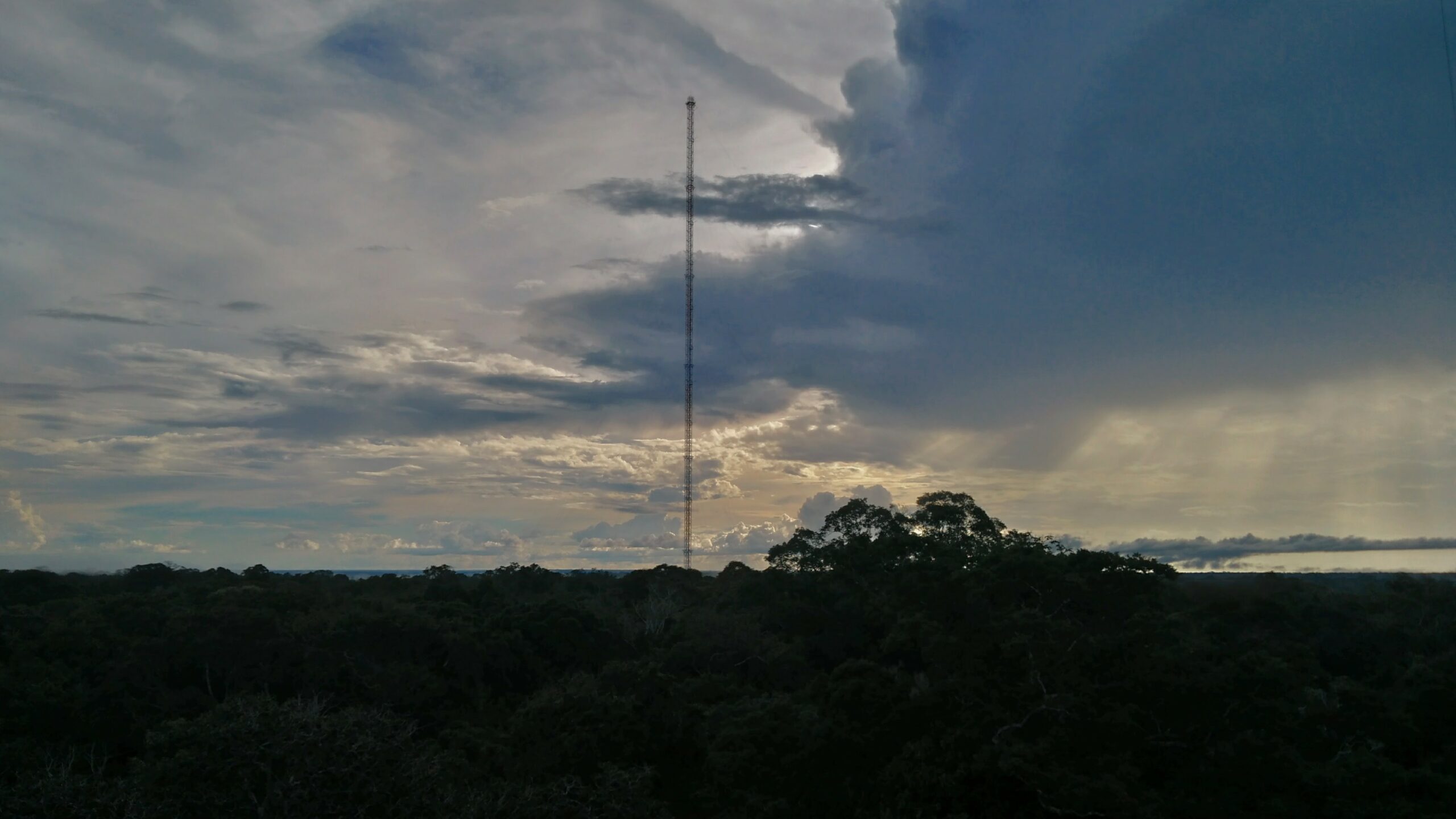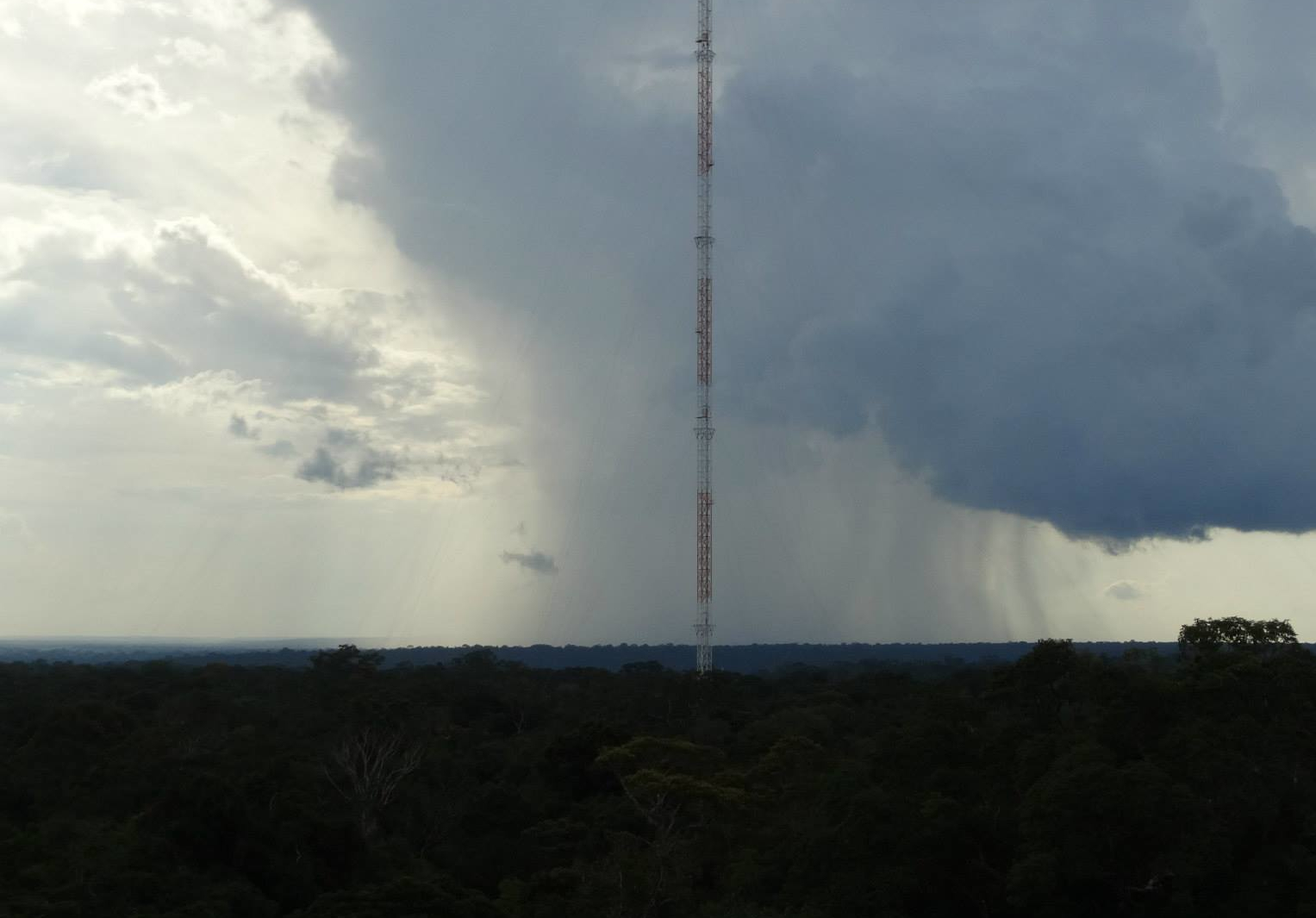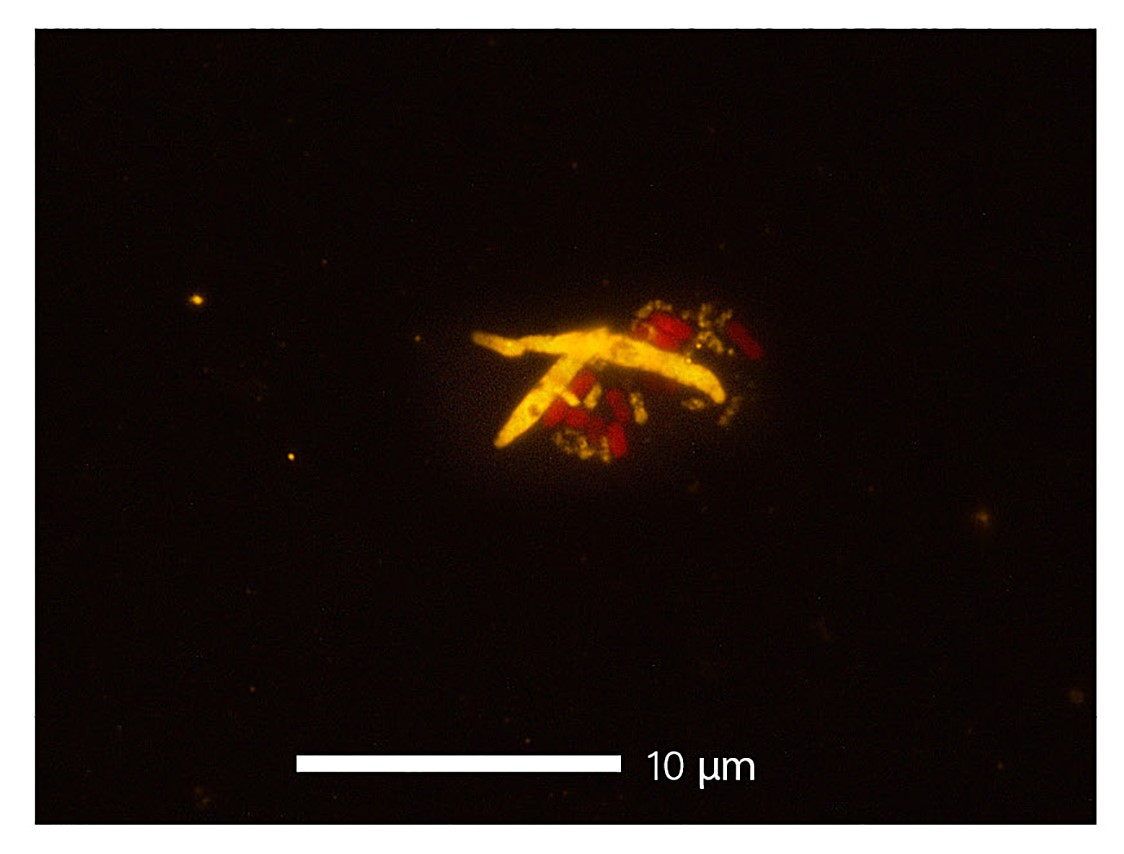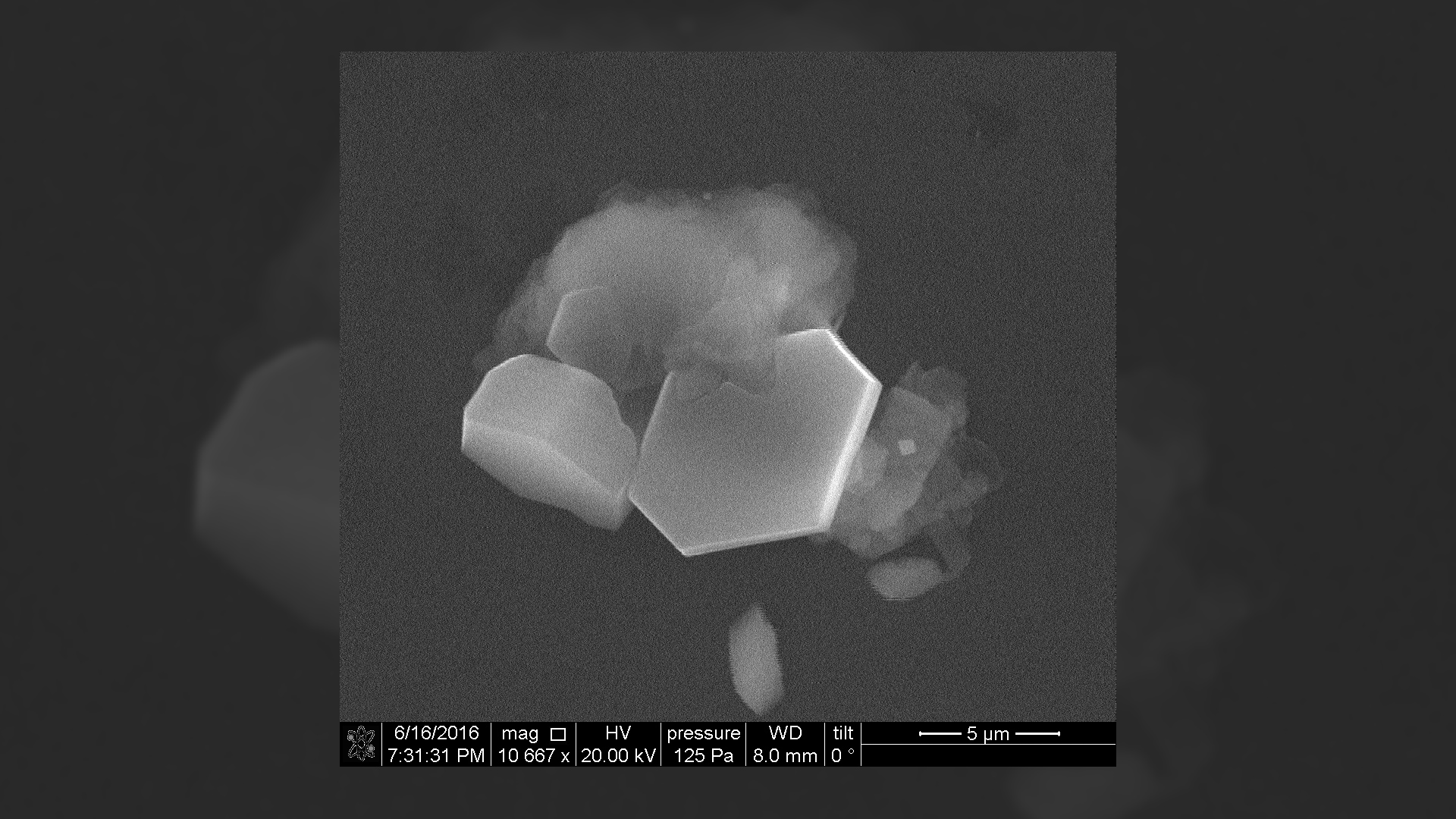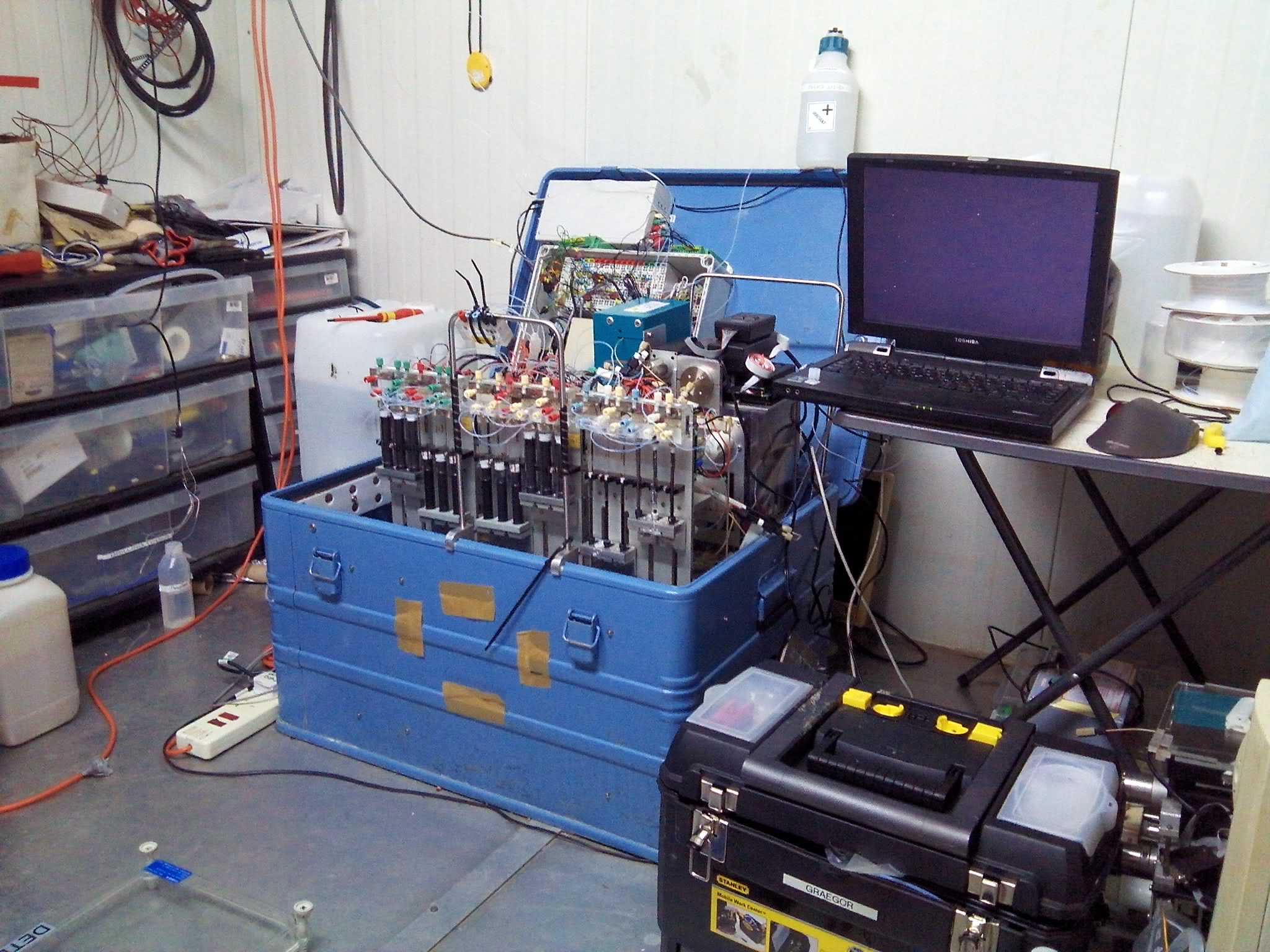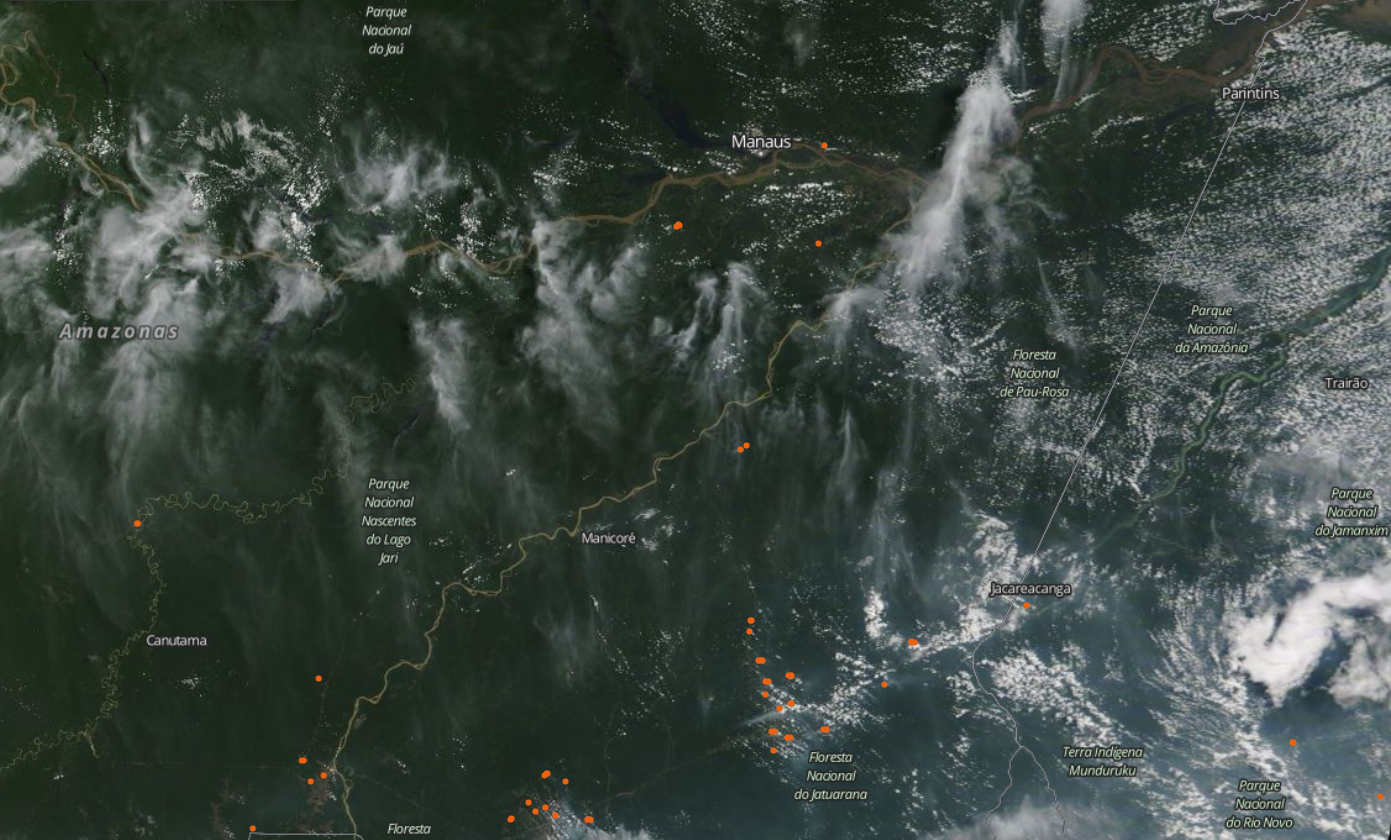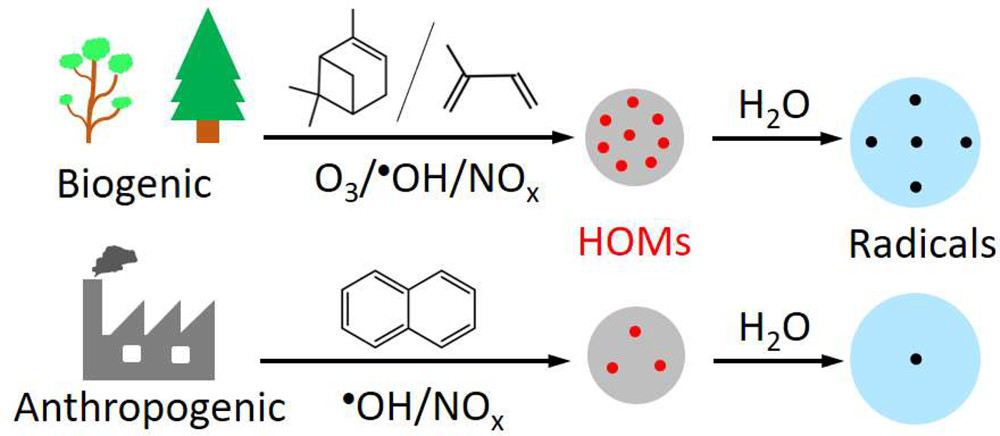The properties and dynamics of clouds are strongly dependent on the types and amounts of aerosol particles in the atmosphere. They act as so-called cloud condensation nuclei as they initiate the formation of cloud droplets. Therefore, it is crucial to gain a sound understanding of the emission patterns, properties, and seasonal variability of aerosols in relation to the cloud life cycles. In order to achieve this goal, our aerosol group was able to record such data at ATTO. Over the course of a full year, they continuously measured aerosols and their properties in the atmosphere at the 80 m tower. Thus, they created the first such long-term record in the Amazon.
The results of the study were published in two parts; the first was released in 2016 and focused on the parameterization of the aerosol properties. This provides the scientific community with input for models to better predict atmospheric cycling and future climate. Because clouds are such a vital and highly complex component of the climate system, it is important for models to get them “right” in order to make reliable predictions.
In this newly published second part of the study, the authors focused on defining the most distinctive states of aerosol composition and associated cloud formation conditions in the ATTO region. They distinguished between four separate regimes that alternate throughout the year. For example, they discovered that the atmosphere is practically pristine during certain episodes in the wet season (from March to May), with no detectable influence of pollution. However, throughout the rest of the year, “foreign” aerosols arrive at the site in varying amounts. They include natural aerosol particles such as Saharan dust, but also pollutants such as smoke from biomass burning (wildfires and much more often deforestation fires) within the Amazon or even in Africa.
Part 1 and Part 2 of this study were published by first author Mira Pöhlker in Atmospheric Chemistry and Physics (ACP) Issues 16 and 18. They are available Open Access and thus freely available for everyone.
Similar articles
More soot particles enter the central Amazon rainforest from brush fires in Africa than from regional fires at certain times.
In a new study, Marco A. Franco and his colleagues analyzed when and under what conditions aerosols grow to a size relevant for cloud formation. Such growth events are relatively rare in the Amazon rainforest and follow and pronounced diurnal and seasonal cycles. The majority take place during the daytime, and during the wet season. But the team also discovered a few remarkable exceptions.
It is long known that aerosols, directly and indirectly, affect clouds and precipitation. But very few studies have focused on the opposite: the question of how clouds modify aerosol properties. Therefore, Luiz Machado and his colleagues looked into this process at ATTO. Specifically, they studied how weather events influenced the size distribution of aerosol particles.
The Amazon rain forest plays a major role in global hydrological cycling. Biogenic aerosols, such as pollen, fungi, and spores likely influence the formation of clouds and precipitation. However, there are many different types of bioaerosols. The particles vary considerably in size, morphology, mixing state, as well as behavior like hygroscopicity (how much particles attract water) and metabolic activity. Therefore, it is likely that not only the amount of bioaerosols affects the hydrological cycle, but also the types of aerosols present.
Bioaerosols may act as cloud condensation nuclei and ice nuclei, thereby influencing the formation of clouds and precipitation. But so far there is less knowledge about the ice nucleation activity of each bioaerosol group and atmospheric models hitherto have not differentiated between them. Patade et al. created a new empirical parameterization for five groups of bioaerosols, based on analysis of the characteristics of bioaerosols at ATTO: fungal spores, bacteria, pollen, plant/animal/viral detritus, and algae. This makes it possible for any cloud model to access the role of an individual group of bioaerosols in altering cloud properties and precipitation formation.
The majority of global precipitation is formed through the pathway of ice nucleation, but we’re facing large knowledge gaps that include the distribution, seasonal variations and sources of ice-nucleating particles. To fill some of those knowledge gaps, Jann Schrod and his co-authors produced a record of long-term measurements of INPs. They collected data for nearly two years at four different locations. One of those sites was ATTO.
Ramsay et al. measured inorganic trace gases such as ammonia and nitric acid and aerosols in the dry season at ATTO. They are to serve as baseline values for their concentration and fluxes in the atmosphere and are a first step in deciphering exchange processes of inorganic trace gases between the Amazon rainforest and the atmosphere.
Soot and other aerosols from biomass burning can influence regional and global weather and climate. Lixia Liu and her colleagues studied how this affects the Amazon Basin during the dry season. While there are many different interactions between biomass burning aerosols and climate, they found that they overall lead to fewer and weaker rain events in the Amazon rainforest.
In a new study, Dr. Haijie Tong and co-authors studied a subset of PM2.5, the so-called highly oxygenated molecules (HOMs) and its relationship with radical yield and aerosol oxidative potential. They analyzed fine particulate matter in the air in multiple locations. This including the highly polluted megacity Bejing and in the pristine rainforest at ATTO. They wanted to get insights into the chemical characteristic and evolutions of these HOM particles. In particular, they wanted to find out more about the potential of HOMs to form free radicals. These are highly reactive species with unpaired electrons.
Wu et al. collected and analyzed aerosols in two locations: the city of Manaus, a large urban area in Brazil, and the ATTO site in the heart of the forest. The aerosol compositions varied largly. At ATTO most aerosols were emitted by the forest itself, while in Manaus, anthropogenic aerosols were very common. The results were published in ACP.



